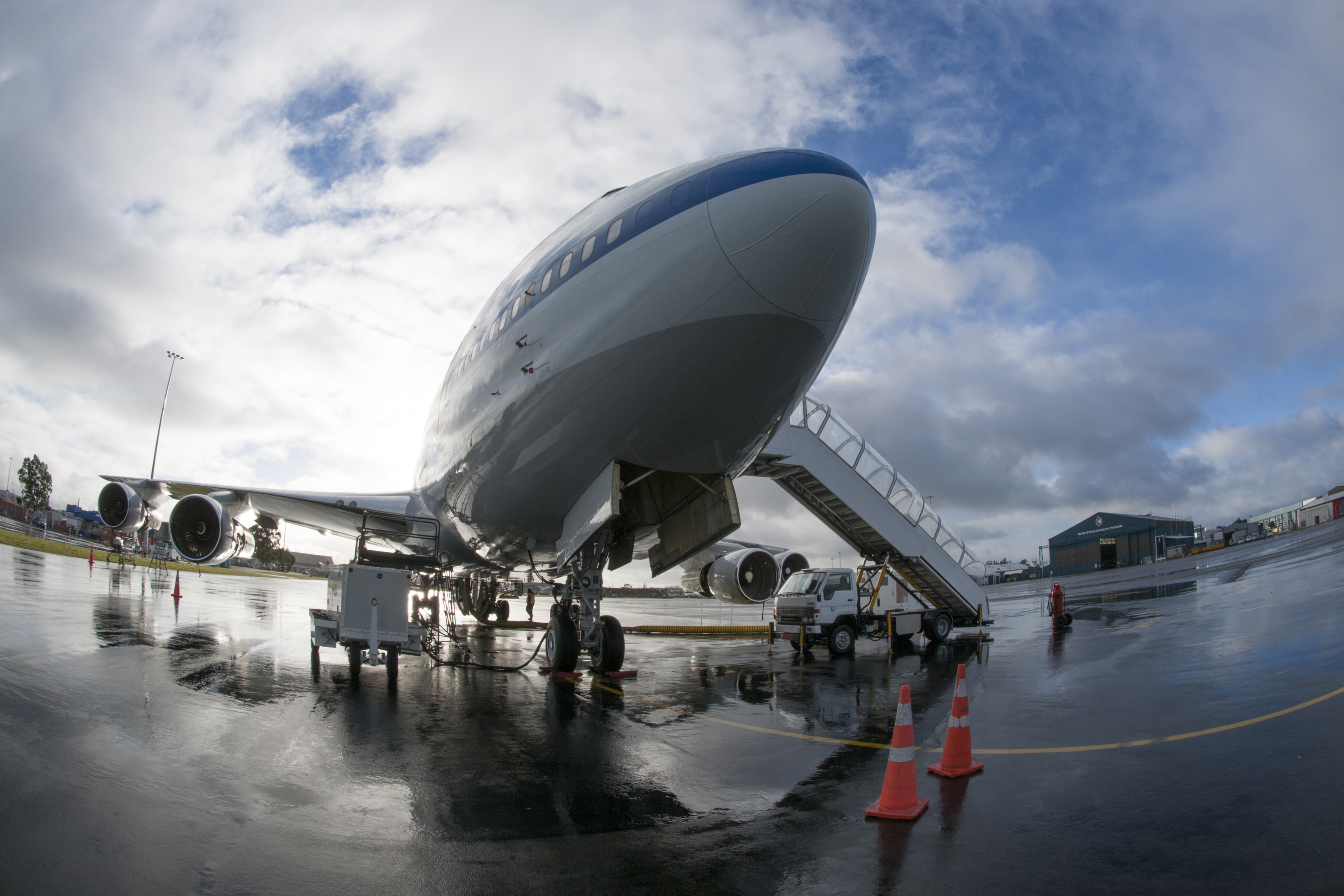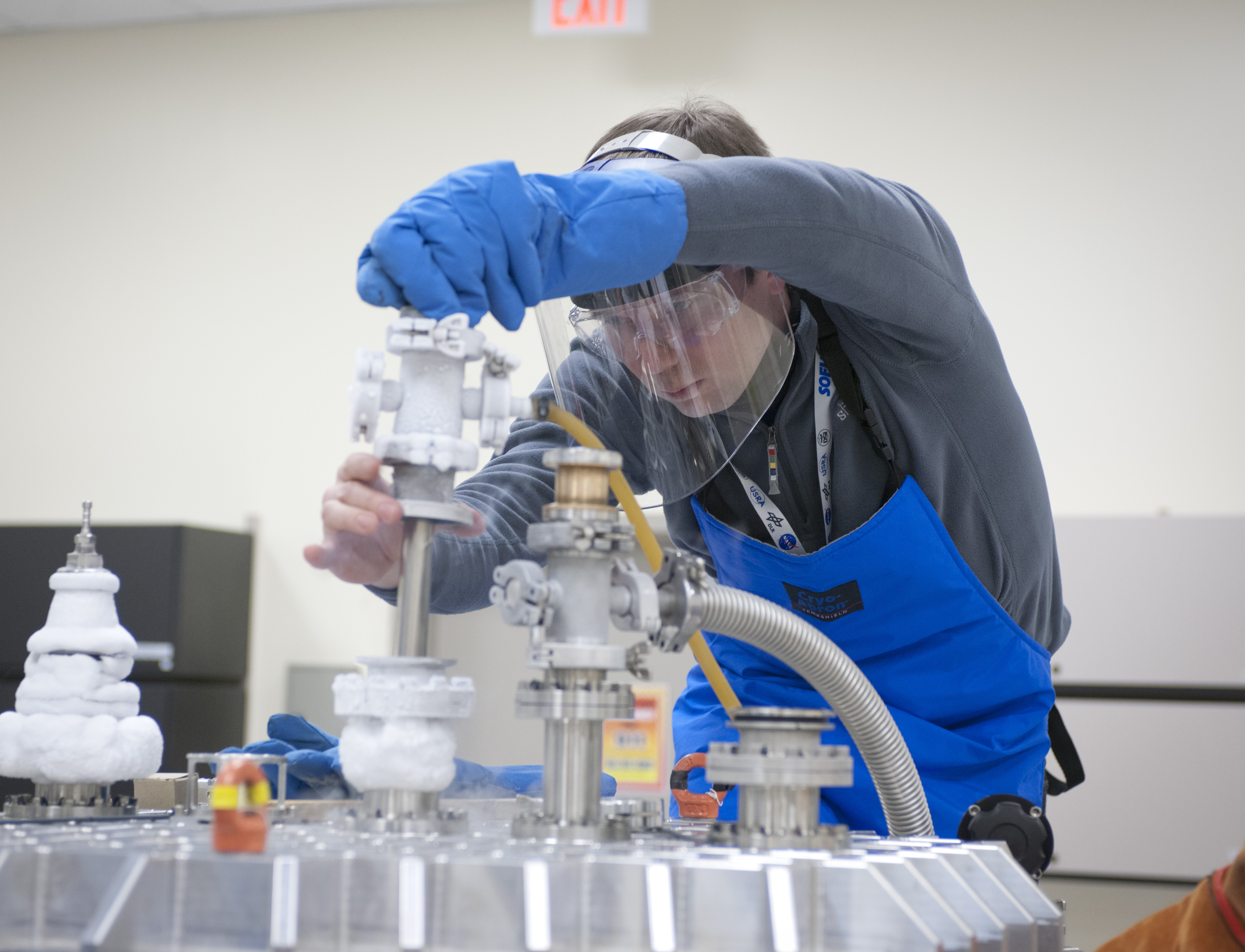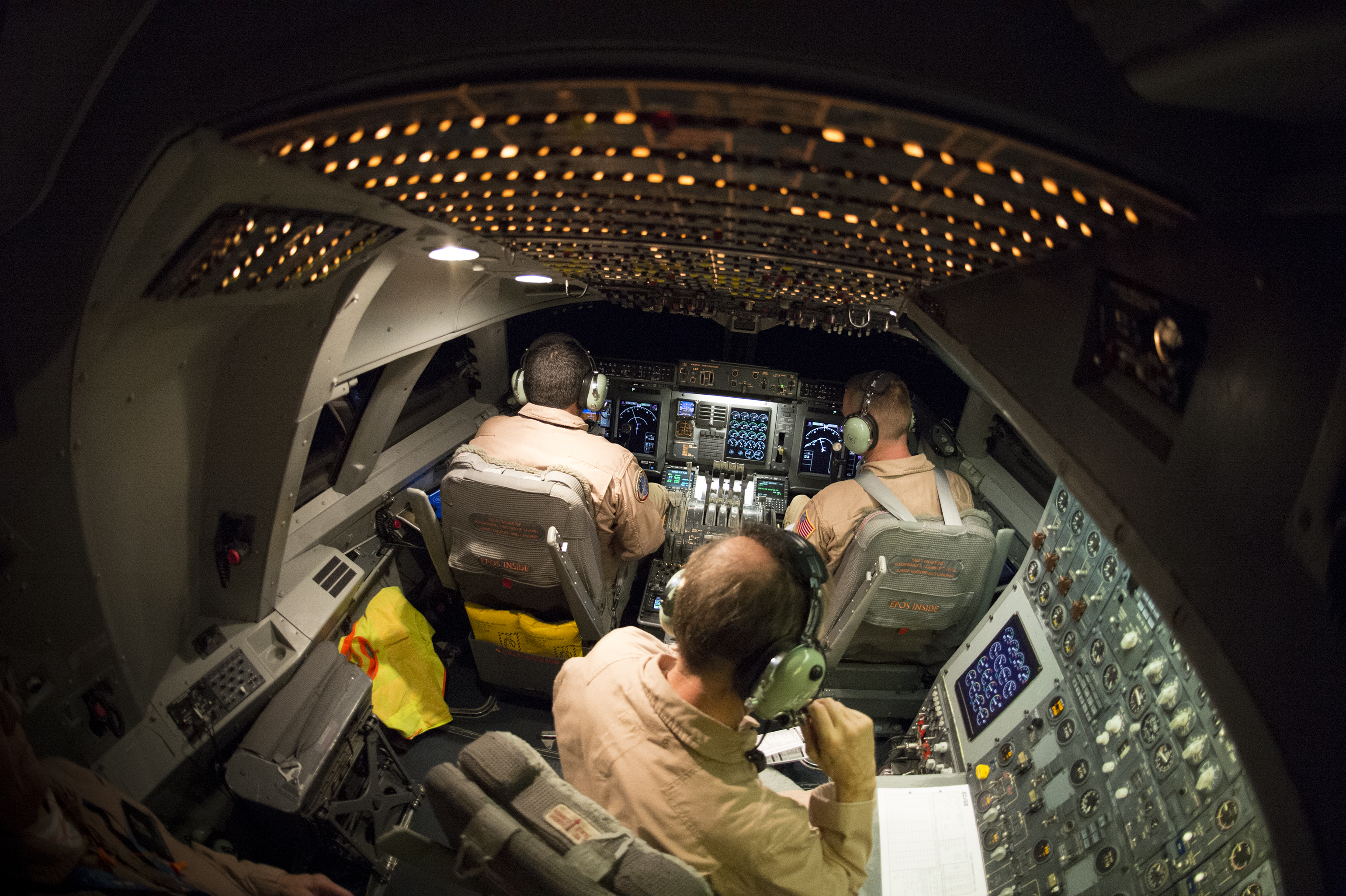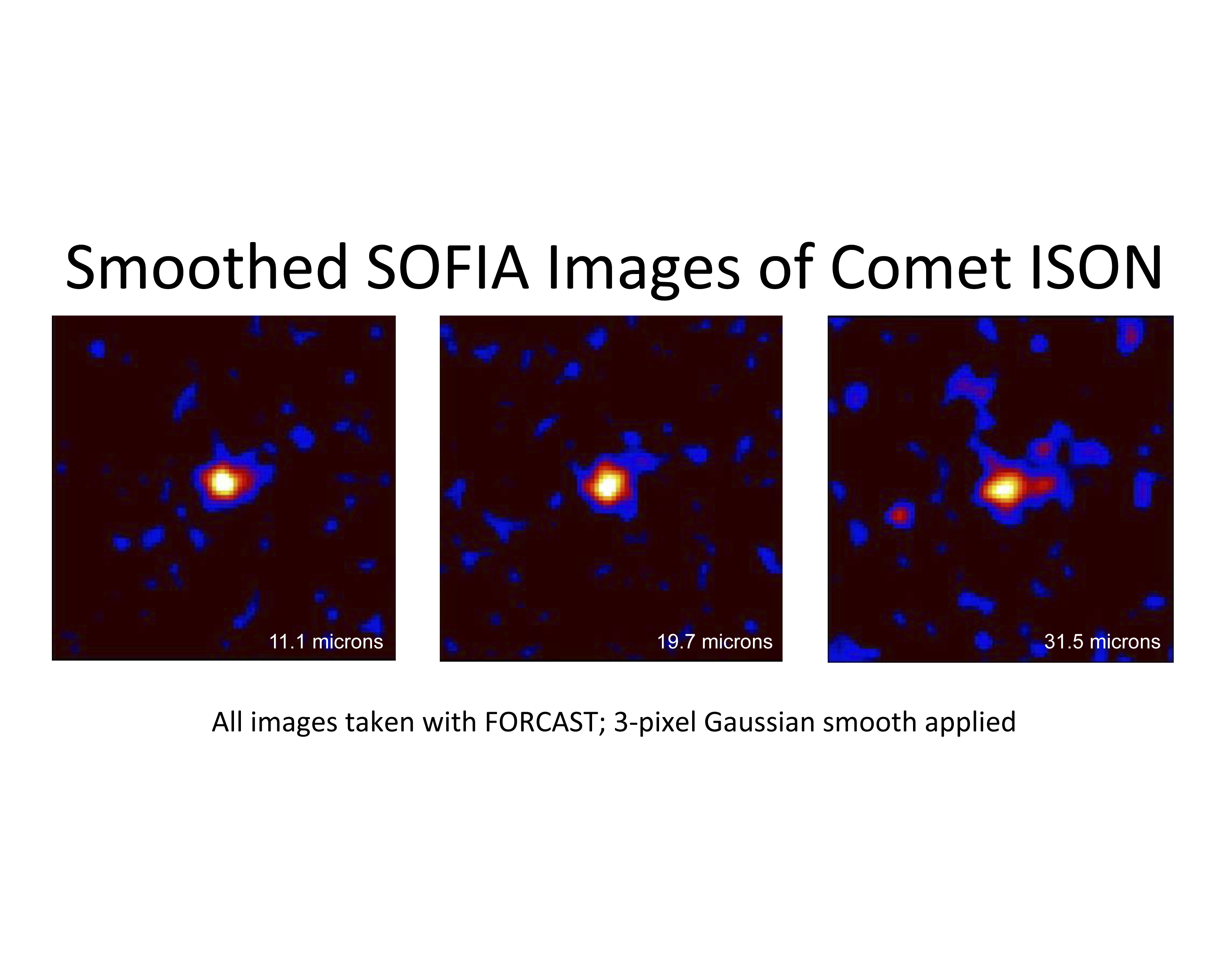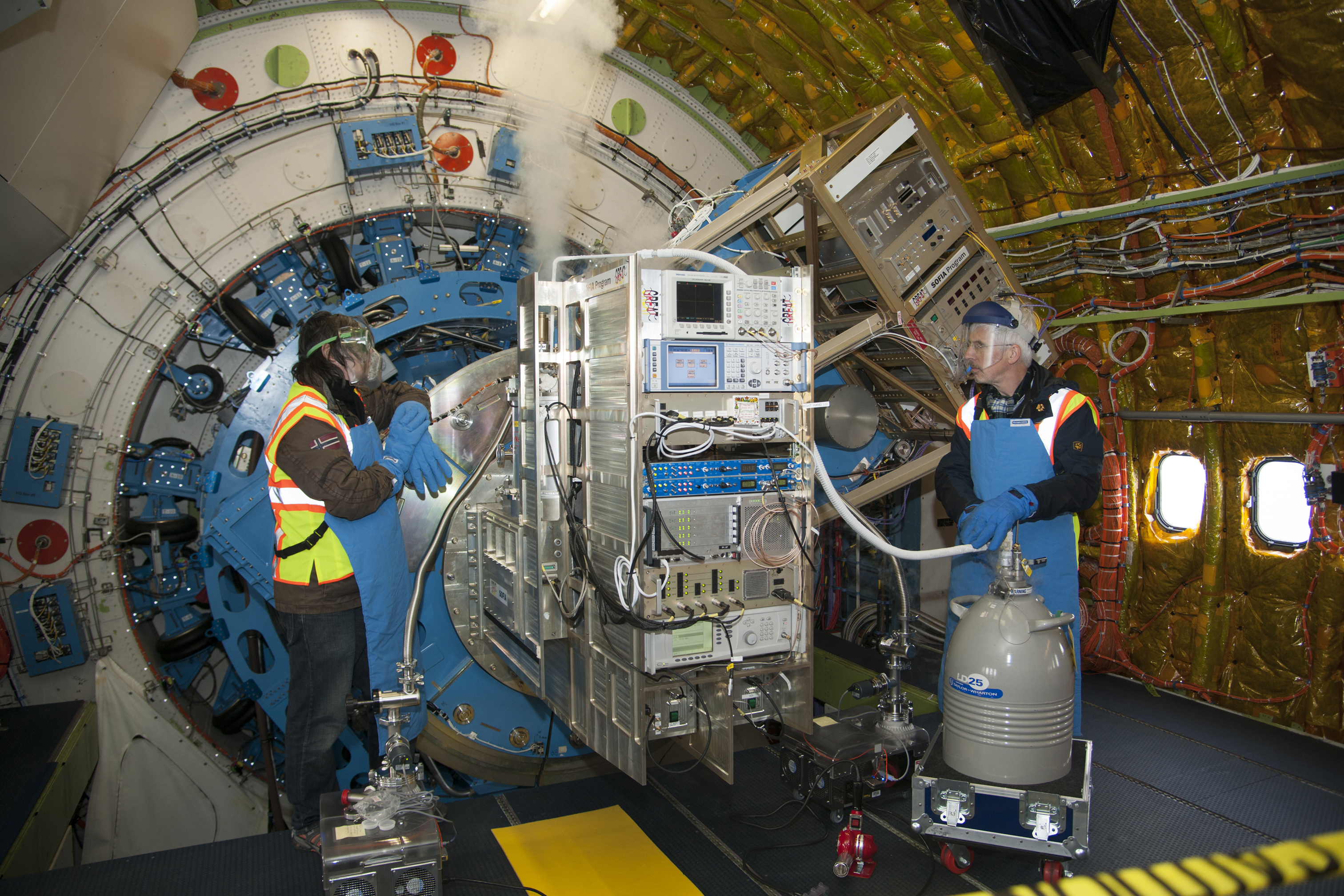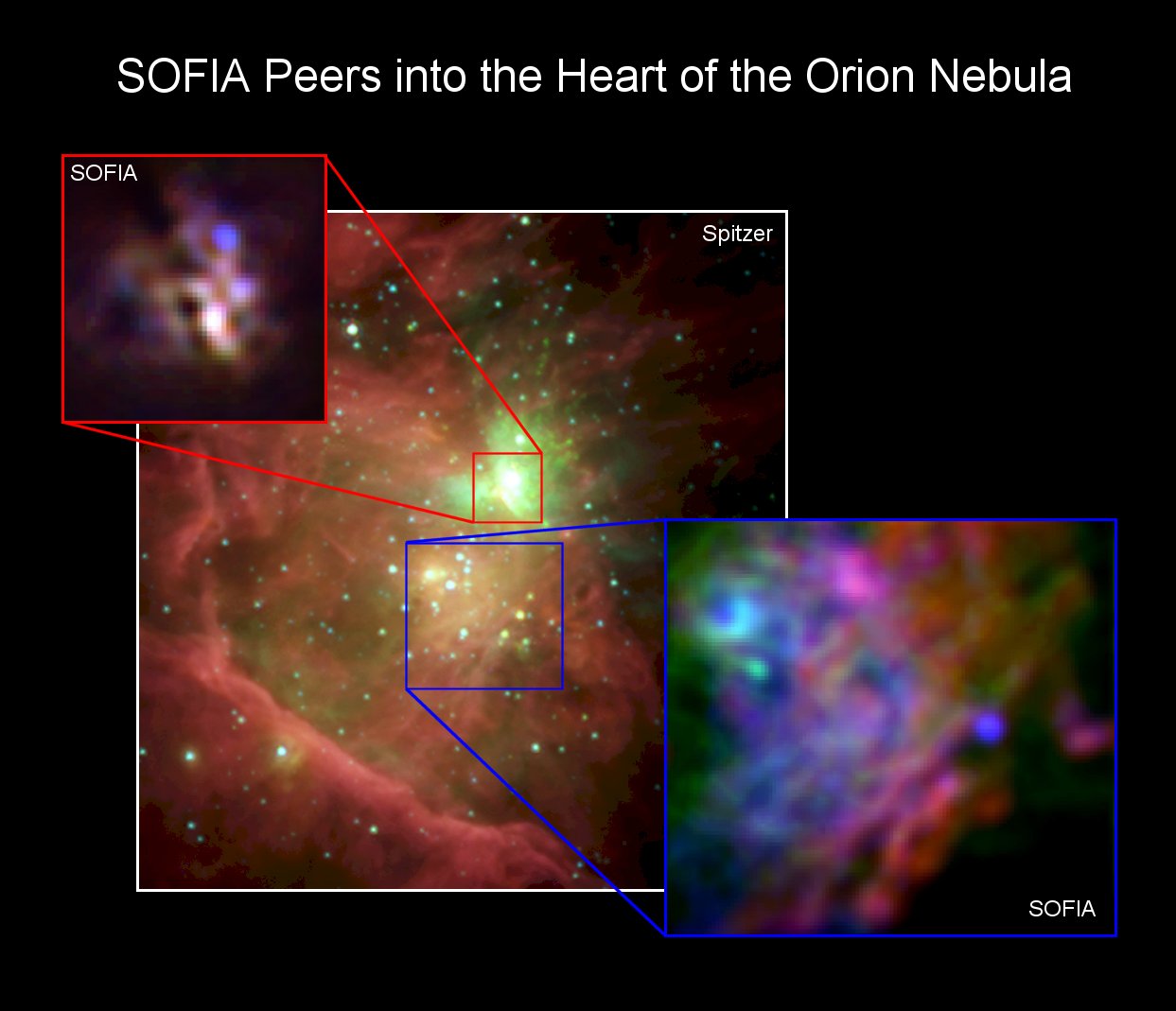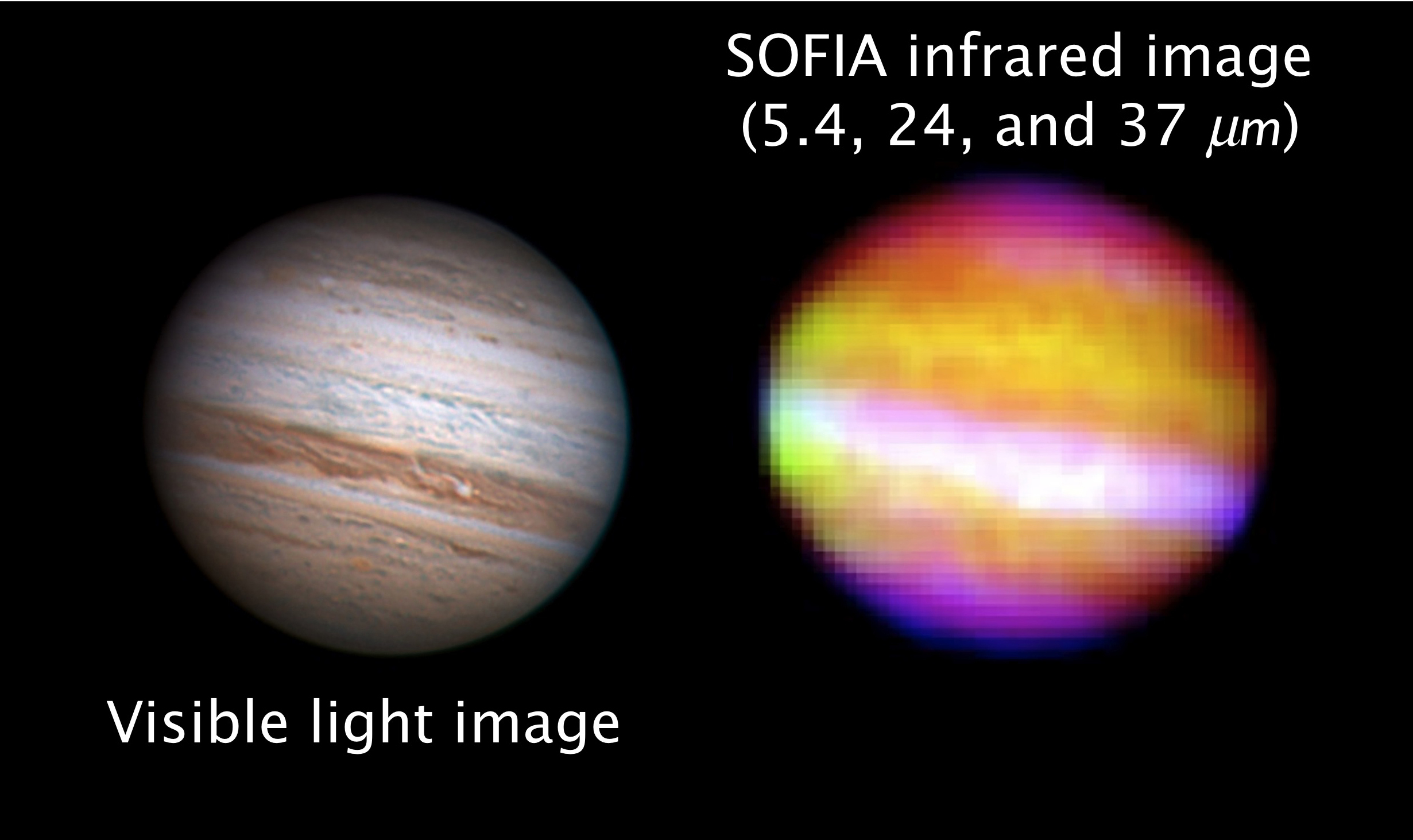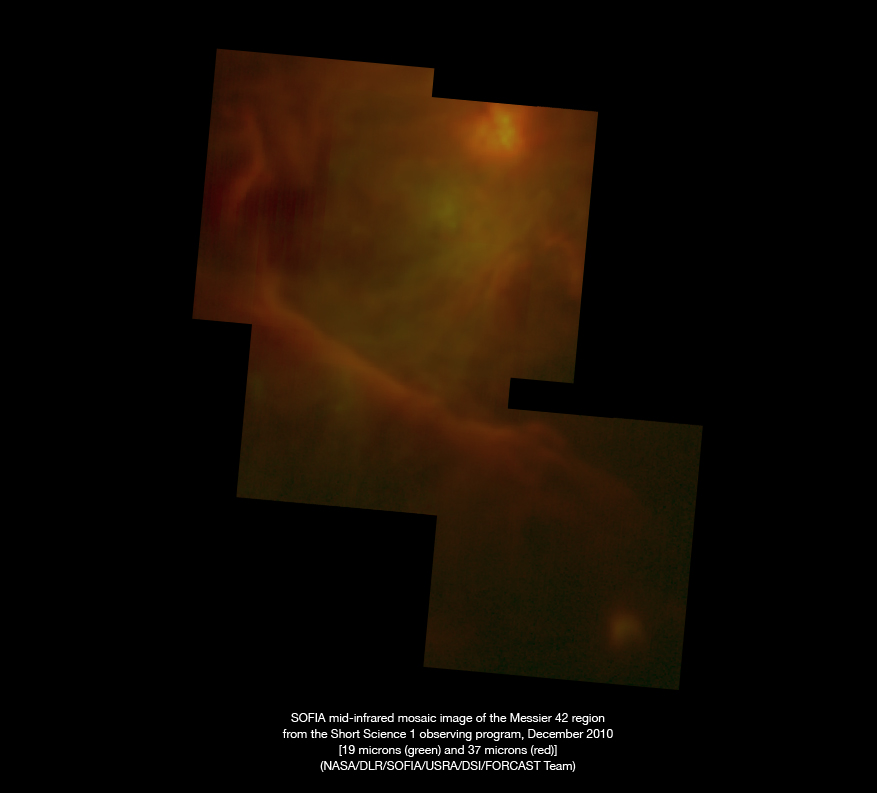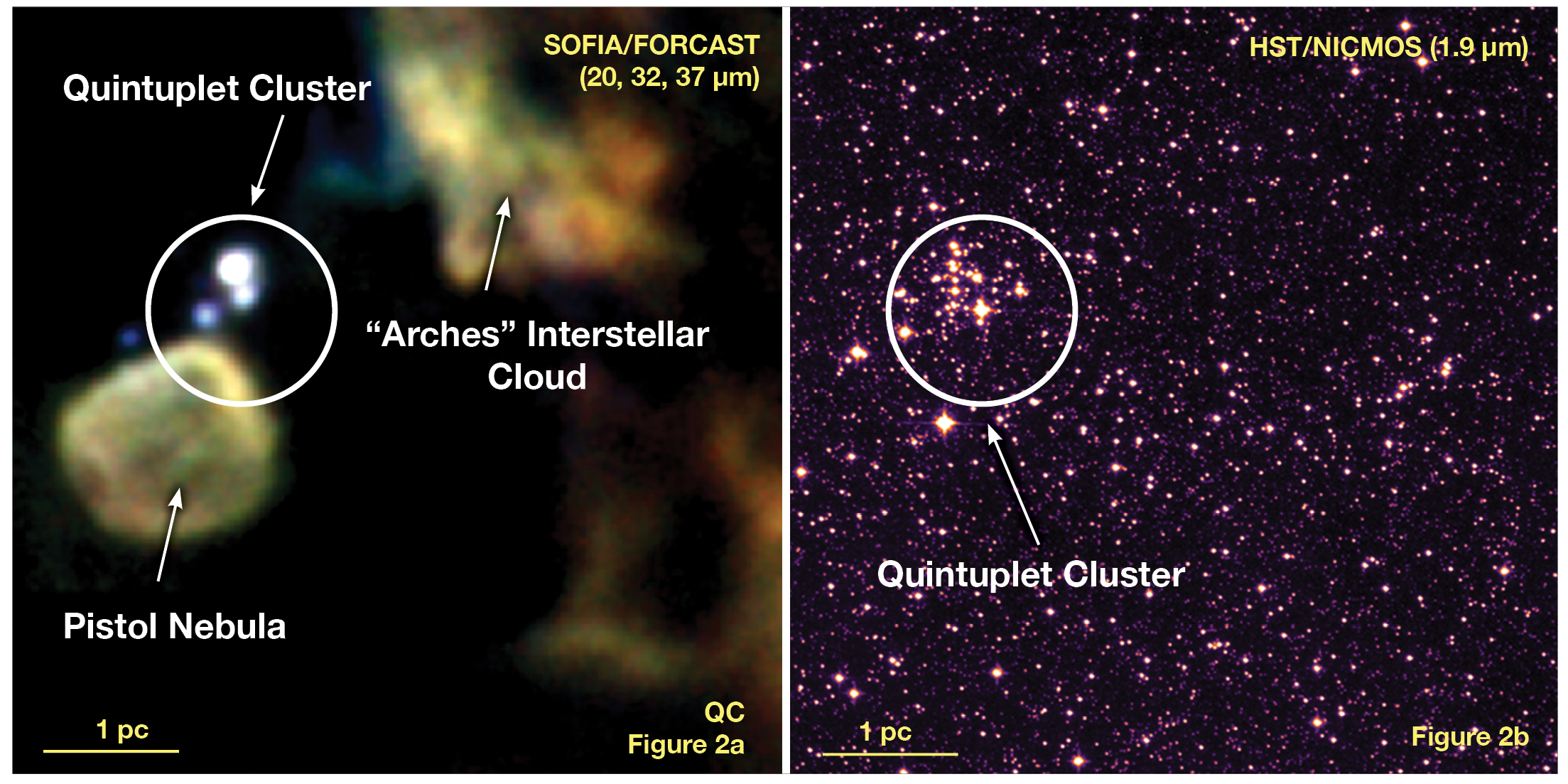Photos from SOFIA, NASA's Flying Telescope (Gallery)
SOFIA's First Southern Hemisphere Deployment
On the rain-soaked ramp at its deployment base at Christchurch International Airport, New Zealand. NASA's SOFIA flying observatory is ready for a mission to study Southern Hemisphere celestial objects. This image was released July 18, 2013.
FIFI-LS Spectrometer Prepared for SOFIA Missions
Christian Fischer, from the University of Stuttgart's Institute for Space Systems, works on the Field-Imaging Far-Infrared Line Spectrometer, or FIFI-LS, in the NASA SOFIA science laboratory prior to testing in preparation for the first observing flights in spring 2014.
Spectrometer Prepared for SOFIA
Christian Fischer checks the FIFI-LS that is cooled by liquid nitrogen and helium during testing. The University of Stuttgart 3D spectrometer will investigate the interstellar medium and star formation regions of the Milky Way when installed in the SOFIA flying observatory.
SOFIA Cockpit and Crew
The cockpit of NASA's SOFIA 747SP is awash with instrumentation lights during one of nine Southern Hemisphere flights to study celestial objects visible in that region.
SOFIA Infrared Imagery of Comet ISON
Images of Comet ISON were obtained by SOFIA's FORCAST camera at wavelengths of 11.1, 19.7, and 31.5 microns. Measurements at 31.5 microns, crucial for determining the temperature and other characteristics of the comet's material, cannot be made using ground-based telescopes.
SOFIA: Cooling the GREAT Spectrometer
Christophe Risacher (left) and Karl Jacobs cool the GREAT spectrometer with a liquid cryogen in preparation for a flight of the SOFIA airborne observatory from Christchurch, New Zealand to study Southern Hemisphere celestial objects.
SOFIA Framed by Rainbow
NASA's SOFIA flying observatory is framed by a rainbow following a shower as it sits on a ramp at Christchurch International Airport, New Zealand during its first Southern Hemisphere deployment. This image was released July 18, 2013.
Breaking space news, the latest updates on rocket launches, skywatching events and more!
SOFIA Image of Orion Nebula
This image compares two infrared pictures of the heart of the Orion nebula captured by the FORCAST camera on the SOFIA airborne observatory's telescope with a wider image of the same area from NASA's Spitzer space telescope.
Jupiter in Infrared by SOFIA
Infrared image of Jupiter from SOFIA’s First Light flight composed of individual images at wavelengths of 5.4 (blue), 24 (green) and 37 microns (red) made by Cornell University’s FORCAST camera. Ground-based infrared observations are impossible at 5.4 and 37 microns and normally very difficult at 24 microns even from high mountaintop observatories such as Mauna Kea due to absorption by water and other molecules in Earth's atmosphere. The white stripe in the infrared image is a region of relatively transparent clouds through which the warm interior of Jupiter can be seen.
Mid-Infrared Mosaic of Orion by SOFIA
Orion Messier 42 region: SOFIA mid-infrared (19 and 37 micron) mosaic image.
Quintuplet Cluster SOFIA Observation
Researchers using the Stratospheric Observatory for Infrared Astronomy (SOFIA) have captured new images of a neighboring cluster of extremely luminous young stars embedded in dust cocoons.

Space.com is the premier source of space exploration, innovation and astronomy news, chronicling (and celebrating) humanity's ongoing expansion across the final frontier. Originally founded in 1999, Space.com is, and always has been, the passion of writers and editors who are space fans and also trained journalists. Our current news team consists of Editor-in-Chief Tariq Malik; Editor Hanneke Weitering, Senior Space Writer Mike Wall; Senior Writer Meghan Bartels; Senior Writer Chelsea Gohd, Senior Writer Tereza Pultarova and Staff Writer Alexander Cox, focusing on e-commerce. Senior Producer Steve Spaleta oversees our space videos, with Diana Whitcroft as our Social Media Editor.
